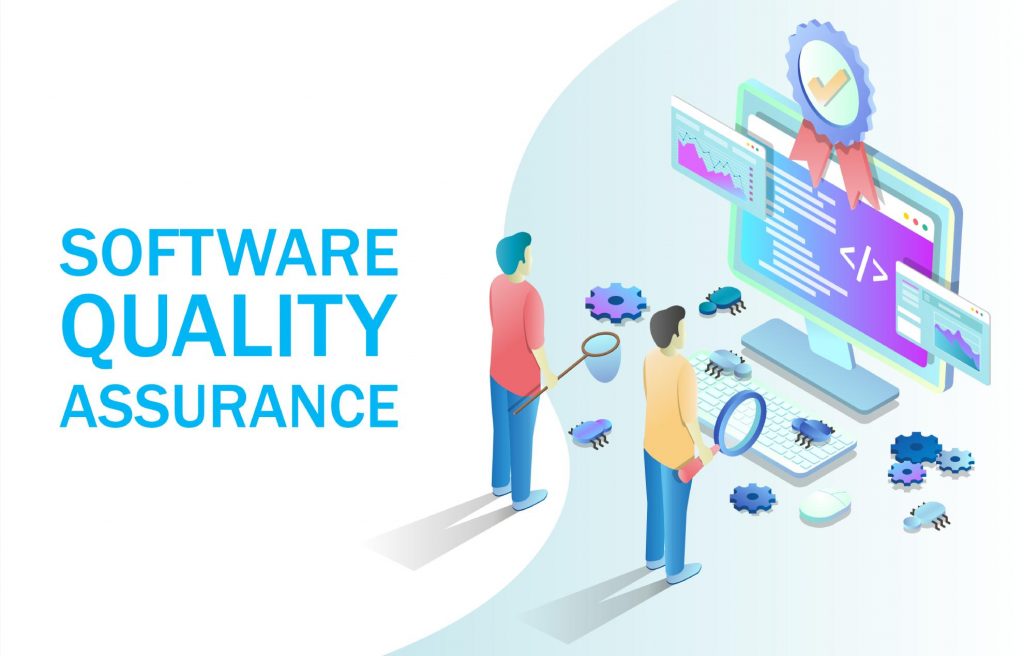Recorded by Business Insider, in 2021, the personal data of 533 million Facebook users were leaked in a low-level hacking forum called Saturday, known as one of the biggest data breaches in history. This scandal happened due to Facebook’s security flaw that unexpectedly exposed more than half a billion users’ information, including their full names, birthdates, phone numbers, locations, email addresses, and biographies. This led to a USD 276 million fine on Meta. This is a danger of missed bugs to entrepreneurs, staff, stakeholders, developers, quality assurance engineers, and finally, users.
Software failures cost US companies $2.08 trillion in 2020, which was mentioned in a “Cost of Poor Software Quality in the US” report that same year. The daunting expenses to resolve these defects add up while confronting the risk of customers shifting to competitors.

Reason #1: Test automation is unavailable
To race against the demand of speed, frequency of tests, and timelines, manual testing can be troublesome and the primary cause of delay in meeting project deadlines. It’s understandable since manual testing heavily involves human factors. Plus, the pre-assumption of believing in their code’s right doings gives the developers the confidence to skip the testing deadlines and continue failing to detect flaws even after the digital product goes to market.
Business owners are familiar with this situation but choose to live with it merely due to the outrageous lump sum upfront investment of Software Testing Automation. In World Quality Report 2021-2022, test automation is regarded as the core of a business strategy since it helps find bugs faster (49%), improve test coverage (47%), and reduce quality assurance costs (47%). Also, approximately half of the respondents, which includes 1,380 agile software delivery experts and influencers, agree that conducting automation tests brings them a higher ROI. Therefore, if you are still contemplating whether or not automation testing is worth it, stop now! It does! Can’t afford the down payment now? Pairing with a software testing automation provider, such as SHIFT ASIA, can save you big bucks in finding the correct tool and resource. At the same time, you could still enjoy the benefits of getting automation testing services at a much cheaper cost.
Reason #2: Deadlines, speed, and costs overshadow software quality
Your employers set the release day for the new version of the eCommerce app for this upcoming Black Friday and Cyber Monday shopping holidays. The deadline is tight, and skipping the testing phase is smart to get the app to go live on time. What can possibly go wrong?
Crashing! Numerous times, this was due to the overwhelming number of visitors at the same time. Without a proper load test, flooded traffic will definitely break the app, bringing the continuous crashing user experience to your visitors, eventually losing revenue and probably ending up in cyberattacks. On average, a developer would spend up to 20% of their time fixing bugs; stated by VentureBeat, that’s how many bugs they “unexpectedly” produce while coding. Skipping tests means you’re letting your software quality go; it is a no-no practice in any context.
In today’s software development business practice, delivering quality solutions at speed to adhere to timelines, remain competitive, and ensure top-notch IT solutions seems to be the norm. How to simultaneously achieve these things?
- Applying the Agile model: The agile model is known for significantly reducing development cycles, enabling the prompt verification of software updates right from the start, and accelerating delivery to the IT market. Additionally, the agility these methodologies provide allows businesses to keep pace with the constant customer-changing expectations and adapt the project requirements accordingly. The 15th State of Agile Report indicates that 64% of top management representatives surveyed credited Agile methodologies for helping them manage changing priorities. In comparison, another 64% cited accelerated software delivery, and 42% noted enhanced app quality. Furthermore, 35% of respondents could reduce quality assurance costs by adopting DevOps practices.
- Shifting to CI/CD: detecting bugs in real-time and fixing them immediately as they arise, without having to wait and set aside defect verification until the final stage. This can become a reality by implementing a test automation strategy that includes continuous integration and continuous delivery (CI/CD). With CI/CD, testing, deployment, and delivery can be carried out continuously throughout the software’s lifecycle, even as it undergoes changes and updates. The best part? You can achieve all of this without compromising quality, making it a dream come true for developers and testers alike.
- Introducing parallel testing: a tight deadline requires extensive testing of an application across multiple devices and browsers. With limited time, you may only test on the latest Google versions, leaving Firefox, Safari, and other users vulnerable to potential bugs. Fortunately, there is a solution: parallel testing. This approach allows you to run the same tests simultaneously across different environments, saving precious time. With this strategy in place, your quality assurance team can allocate resources toward other mission-critical tasks while ensuring the application is thoroughly tested across all necessary platforms.
Reason #3: Lack of expertise
Obviously, having an in-house testing team, members on board to handle the workload even in a large-scale project, and being equipped with the essential specialized skills is having a dream testing team on hand, which isn’t always the case.
Imagine having only two testing specialists on board who could only cover some testing aspects, from functionality to performance. This limited scope shall result in potential issues related to missing aspects, such as the Flightradar24 platform failure due to heavy loads and cybersecurity, like the 2021 data leakage incident, where the breach cost was estimated at $4.35 million, to remain undetected. It is a must for quality assurance teams to have a wide range of skills and expertise to perceive and forecast all potential risks and issues that are identified and addressed during the development and testing process.
To resolve this issue, businesses might have to consider these two options:
Onboarding the right in-house team
Given the constant evolution of technology, quality assurance professionals need to stay current with the latest trends and developments in the IT industry to implement practical software testing approaches, such as shift-left and continuous testing, methodologies, such as Agile and DevOps, and best practices to tackle quality assurance-related challenges of any complexity level.
To keep the in-house QA team going, more expertise is needed. Strong time management skills and self-discipline among team members are equally vital to ensuring that work progresses according to plan and that deadlines are met effortlessly.
Even if your quality assurance team becomes highly skilled and experienced, ongoing training, which involves organizing specialized seminars and gaining proficiency in new quality assurance areas, should occur regularly to ensure the team’s knowledge and skill sets are current and relevant.
Outsourcing software testing
Companies often turn to quality assurance outsourcing services to avoid budget overruns, reduce quality assurance costs, and speed up the timeline. The quality assurance outsourcing market is expected to reach $425.19 billion by 2026, up from $318.5 billion in 2020, according to Report Linker. Here are the four common scenarios that may prompt companies to hire additional quality assurance experts:
- Look for an effective and flexible team: Integrating offshore quality assurance specialists into your infrastructure is quick, as they can adapt to any request and can be easily scaled up or down based on your requirements.
- Want to save time and budget: At the onset of a project, freelance professionals optimize quality assurance workflows, enabling efficient and affordable identification and resolution of defects during the initial phases of development.
- Strive to accelerate time to market: A specialized quality assurance team devises an optimal quality assurance strategy that accelerates workflows and enables the faster release of IT products.
- Need to ensure safety standards compliance: An impartial evaluation by offshore experts not only helps to identify minor, central, and hidden defects in the system but also ensures compliance with all relevant global protocols, such as HIPAA, FDA, OWASP, and more.
Final thoughts
Undeniably, defects are a nightmare since they negatively affect product owners, developers, quality assurance engineers, users, brand images, and more. Hence, to prevent bugs during production, it is crucial to dig deep down under the surface, identify their root cause, and tackle them. These include implementing test automation, adopting modern approaches like CI/CD and parallel testing, and ensuring that the QA team possesses the necessary skills and expertise, whether in-house or outsourced.
However, don’t hesitate to contact SHIFT ASIA if you want to be consulted thoroughly for the software quality assurance process. As a leading software testing company, SHIFT ASIA, with experienced professionals, will provide you with the top advanced solutions to improve the quality of your products. With the philosophy of “As Your Partner for Quality,” SHIFT ASIA will continue to strive to be a trusted partner in Japan’s quality standards for businesses worldwide.
ContactContact
Stay in touch with Us




